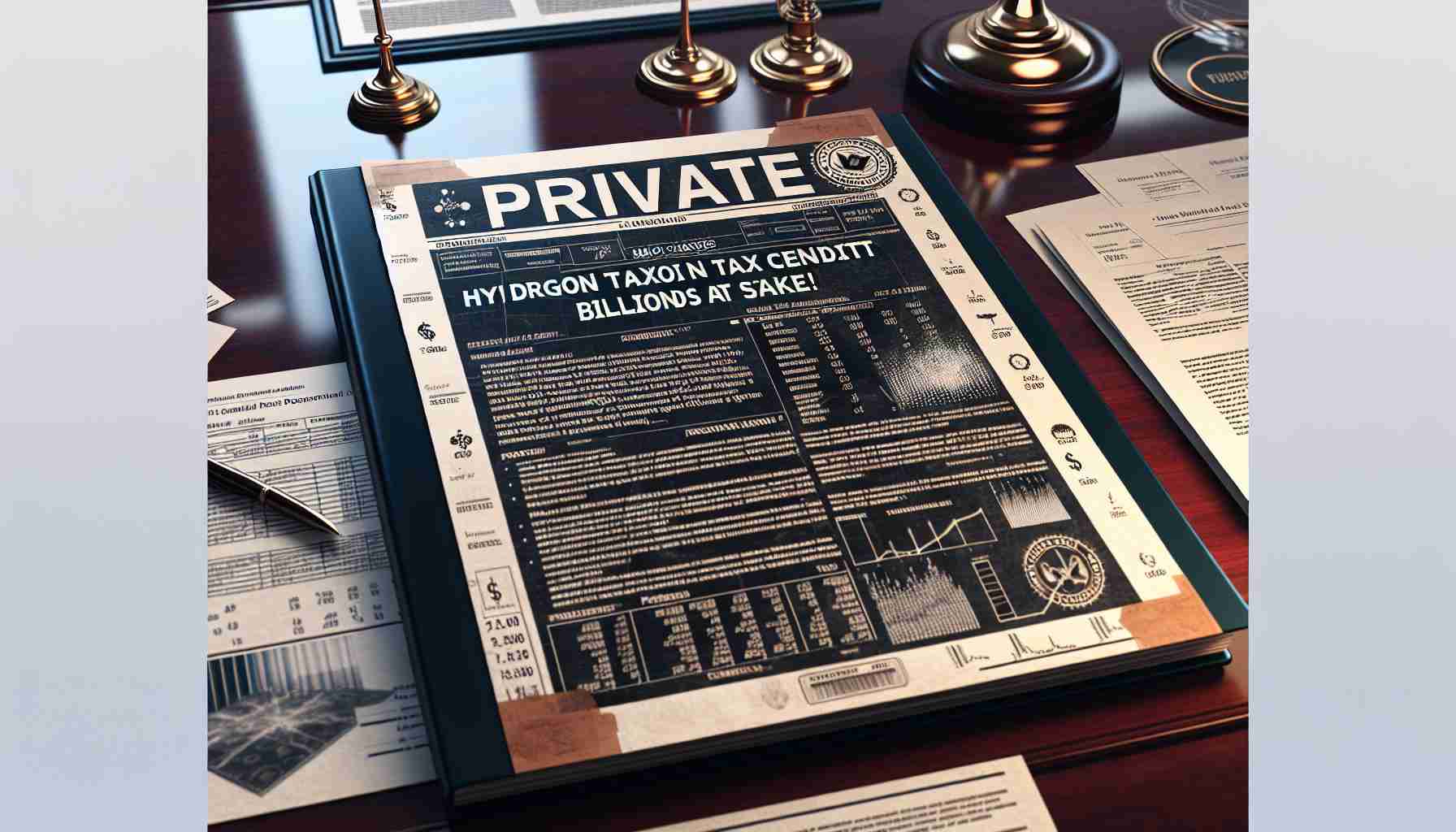The Biden administration unveiled final regulations for a transformative tax credit aimed at bolstering the production of cleaner hydrogen. This initiative is set to allocate significant funding to hydrogen manufacturers, with the potential to reshape energy production and reduce greenhouse gas emissions.
Environmental advocates have cautiously welcomed these new rules. While they acknowledge the potential for emission reductions, concerns remain about loopholes that might favor less environmentally friendly hydrogen production methods. The government is focused on increasing hydrogen output to help transition from fossil fuels in challenging sectors, including long-distance transport and heavy manufacturing like steel production.
Currently, a large proportion of hydrogen is derived from natural gas, which contributes to climate issues. However, there are cleaner methods available, such as generating hydrogen through electrolysis powered by renewable energy sources, which could drastically cut emissions.
The newly established guidelines could reward hydrogen producers using natural gas, provided they implement technologies that minimize emissions. Additionally, firms utilizing waste products for hydrogen generation might also benefit from full tax credits.
According to Treasury officials, the credit evaluates the overall emissions across the hydrogen production process rather than just the source of the hydrogen. While the strategy has encountered bipartisan support, environmental groups are wary of its implications, fearing that some inefficient producers could also reap the rewards. As the hydrogen industry stands on the brink of significant growth, stakeholders are eager to see if these new measures will foster sustainable investment and innovation.
Transforming the Future of Clean Energy: Biden’s New Hydrogen Tax Credit Regulations
Introduction
The Biden administration has recently introduced final regulations for a game-changing tax credit aimed at enhancing the production of cleaner hydrogen. This major initiative is designed to provide substantial funding to hydrogen manufacturers, with the overarching goal of revolutionizing energy production and significantly reducing greenhouse gas emissions.
Overview of the New Regulations
These groundbreaking regulations emphasize a commitment to clean energy, especially in industries often reliant on fossil fuels. The focus is on increasing hydrogen output, which could replace traditional methods in difficult sectors such as long-distance transport and heavy manufacturing, particularly in steel production.
Current Hydrogen Production Landscape
A significant portion of hydrogen today is derived from natural gas, which poses a substantial threat to climate health. However, cleaner hydrogen production methods are on the rise, especially techniques that involve electrolysis powered by renewable energy sources. These methods have the potential to dramatically reduce emissions and reshape the energy sector’s landscape.
Tax Credit Details
The newly proposed tax credit evaluates overall emissions from hydrogen production rather than focusing solely on its source. Consequently, while natural gas-based hydrogen production could still receive credits, it must employ technologies that effectively minimize emissions. Additionally, firms that leverage waste products for hydrogen might also qualify for full tax credits, encouraging innovative approaches to hydrogen sourcing.
Pros and Cons
Pros:
– Encourages investment in cleaner hydrogen technologies.
– Supports transition from fossil fuels in critical industries.
– Opens opportunities for innovative waste-to-hydrogen processes.
Cons:
– Potential loopholes may allow environmentally harmful practices to benefit from subsidies.
– Concerns about efficiency and effectiveness of some hydrogen production methods.
Environmental Concerns and Controversies
Although the regulations have received bipartisan support, environmental advocates express apprehension regarding potential loopholes that could incentivize less sustainable hydrogen production methods. There is a prevalent fear that the tax credits might not exclusively benefit efficient and clean hydrogen producers, allowing inefficient facilities to profit instead.
Future Implications for the Hydrogen Industry
As the hydrogen industry approaches a pivotal growth stage, these new guidelines may either catalyze sustainable investment and innovation or lead to challenges in environmental integrity. Stakeholders across various sectors are closely monitoring the implementation of these regulations and their impact on future energy initiatives.
Conclusion
With the new tax credit regulations, the Biden administration aims to foster an environment conducive to sustainable hydrogen production while addressing important environmental concerns. The successful execution of this initiative could play a critical role in the United States’ transition to a cleaner energy future.
To stay updated on developments regarding clean energy and the hydrogen sector, visit Energy.gov.
